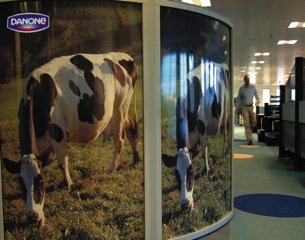
Need to know
- Putting choice and flexibility at the heart of a company car scheme can increase engagement with the benefit.
- Employers must be mindful of the varied requirements and priorities of its workforce.
- Relevant and comprehensive communication provides employees with a full understanding of company car schemes and can boost take up.
As the needs of today’s workforce evolve, so too must the benefits offered by employers, including the provision of company car schemes.
Flexibility
There is no singular employee model that an organisation can build their benefits around. Offering company car schemes that provide a degree of flexibility where possible, can help employers to meet the varied requirements of its employees. This flexibility, which can be advantageous for both employers and their staff, extends to factors such as car type and funding methods.
Richard Jessop, head of salary sacrifice at Ogilvie Fleet, says: “There’s a growing realisation that one-size-fits-all approaches [to employee benefits] aren’t supporting the changing needs of employees; they need a degree of flexibility and choice.”
For employers and staff, budgeting has become ever more important, so company car schemes need be as cost-effective as possible. In turn, this can boost take-up of the schemes and increase their appeal.
One way of enhancing flexibility is to offer cars as a benefit through a salary sacrifice arrangement, which could sit alongside more traditional company car schemes. Car salary sacrifice schemes tend to be popular with employees because they are straightforward to manage and cost-effective. Alison Argall, business development director at Tusker, says: “Budgets are tighter than ever before, and with car salary sacrifice schemes, all the employee has to do is add fuel, so it is fairly easy to budget monthly.”
Salary sacrifice schemes can also enable employers to extend cars as a benefit to members of its workforce that may not be eligible for existing company car schemes, thereby complementing and expanding its benefits offering.
Modern communication
Considering the range of benefits available through many of today’s employee benefit packages, more may need to be done to make company car schemes stand out from the crowd. “Today’s workforce has a plethora of benefits to choose from; each employee will have a different budget and will look to maximise the number of benefits they receive to best suit their personal circumstances,” says Jessop.
Strong communication strategies can be harnessed to promote company car schemes, as well as to improve employees’ understanding of what the scheme that they are being offered means for them in terms of cost and use.
Connect through choice
Offering a range of cars for staff to choose from can help employers increase staff engagement with company car schemes and increase take-up. Taking employee feedback into account can enable employers to ensure that the benefits they offer to staff are both appropriate and valued.
John Webb, principal consultant, Lex Autolease, says: “There’s a realisation now that employees want to have more of a say in what benefits they’re offered and how.”
Because the qualities that employees look for in a car may vary from individual to individual, access to a broad choice of vehicles to suit their lifestyle is a key priority for many company car drivers. The green credentials of a car have also become a more significant factor for consideration, particularly among younger staff. Peter Eggeman, fleet consultant at Zenith Leasedrive, says: “The generation of drivers starting to take company vehicles for the first time have been brought up to be more environmentally aware.
“Another factor [influencing company car schemes] is the rising popularity of ultra-low emission vehicles (ULEVs). The government has indicated that two-thirds of all newly registered ULEVs have been bought for fleet usage and that the UK is the fastest-growing European market for ULEVs,” adds Eggeman.
Low-emission cars could overtake more traditional priorities for company car schemes, says Toby Poston, director of communications and external relations at the British Vehicle Rental and Leasing Association (BVRLA). “Fleet managers and company car drivers tell us that tax cost and fuel efficiency are more important than driving performance and vehicle design when choosing cars. Looking ahead to 2020, they believe that sustainability and in-car connectivity will become more important selection criteria,” he adds.
Indeed, more than half of employers (54%) are taking steps to make their fleets more environmentally friendly and to reduce carbon emissions, according to The Employee Benefits/Alphabet Fleet research 2015, published in July 2015.
To make company car schemes appealing for today’s workforce and beyond, staying in tune with the evolving needs and priorities of employees is key. Building flexibility and choice into schemes can boost engagement, but it is also crucial that employers thoroughly communicate the scheme to their staff.
 Danone engages staff with company cars
Danone engages staff with company cars
Danone uses communication to ensure its longstanding company car scheme remains relevant and valued by staff.
In September 2015, Danone launched a salary sacrifice car scheme as a separate benefit, which is offered alongside its existing company car plan. Both schemes are provided by Leaseplan.
The new scheme is available to all of Danone’s 1,300 UK employees, including its 350 dedicated car drivers.
John Mayor, head of UK rewards at Danone, says: “We offer our company car scheme and salary sacrifice scheme separately because the company car scheme is in line with our global policy. The salary sacrifice scheme offers freedom of choice for a low emission, greener vehicle and the more choices we give, the better we are at attracting and retaining the best-possible staff. Our ambition is to be ahead of our competitive set in terms of total reward.”
To communicate the car schemes, and to ensure staff are fully aware of what they are being offered and the potential savings to be made, the employer uses communication methods such as desk drops, posters, road shows and posts on its intranet site.
Upon the launch of the car salary sacrifice arrangement, Danone ran an email communications campaign that achieved an 82% engagement rate.
 Viewpoint: Cost efficiency and green credentials among key drivers of change in company car schemes
Viewpoint: Cost efficiency and green credentials among key drivers of change in company car schemes
The biggest driver of change has been the tax system. Benefit-in-kind (BIK) tax is based on the car’s carbon dioxide (CO2) emissions and the government cranks up the BIK tax rate every year. This encourages employees to choose cars emitting ever-lower levels of CO2, particularly diesels.
Many employers now wish to do their bit to help the environment, so they impose their own cap on CO2 levels. Normally 120g/km is common, but this number is reducing every year as the number of new low-emission models increases. Most employees seem to accept that these arrangements are a necessary part of the government’s green agenda.
Another trend is that more and more employers now allow employees to ‘trade up’; make a monthly contribution to get the company car they want or need.
The BIK tax system also encourages many workers to give up a benefit that was once quite common; free, private fuel paid for by their workplace. If someone is still receiving this benefit, they should check if it is actually giving them a benefit, because they may be saving the cost of the fuel but may be paying even more than that in extra pay-as-you-earn (PAYE) and national insurance.
One big change in recent years has been car salary sacrifice schemes. Employers such as these because they represent an attractive benefit of employment and help employers meet their health and safety obligations. Rather than driving business mileage in an old ‘grey fleet’ car, their employees are driving new, properly managed and maintained cars.
Despite these advantages, salary sacrifice won’t replace regular company cars; it tends to be offered to employees who would not have qualified for a company car, because it is most cost-effective for smaller, cheaper cars with low CO2 emissions; cars that are not usually used for lots of business mileage.
Colin Tourick is Grant Thornton professor of automotive management at the University of Buckingham Business School.